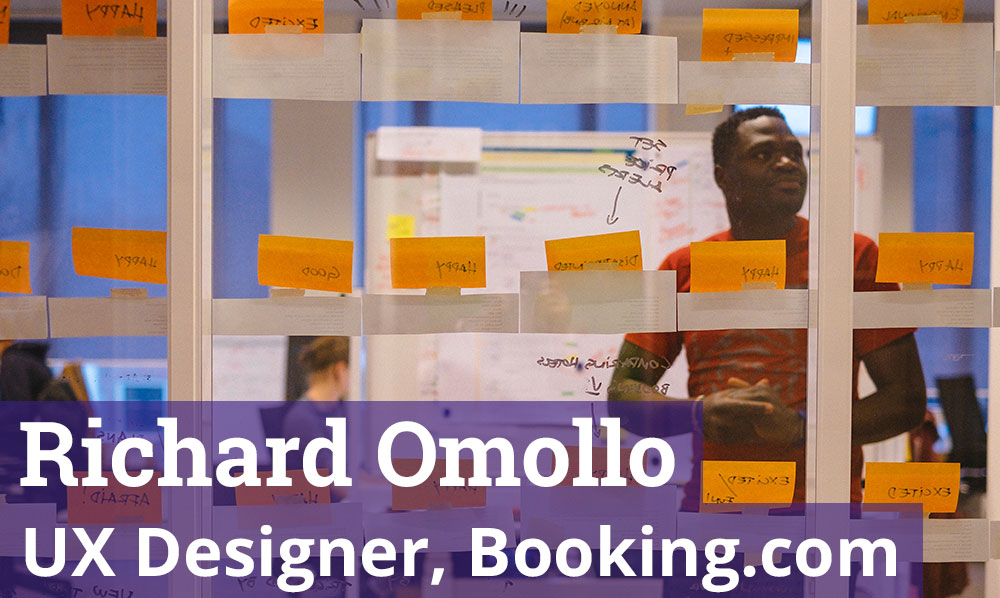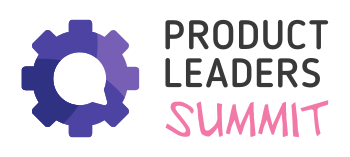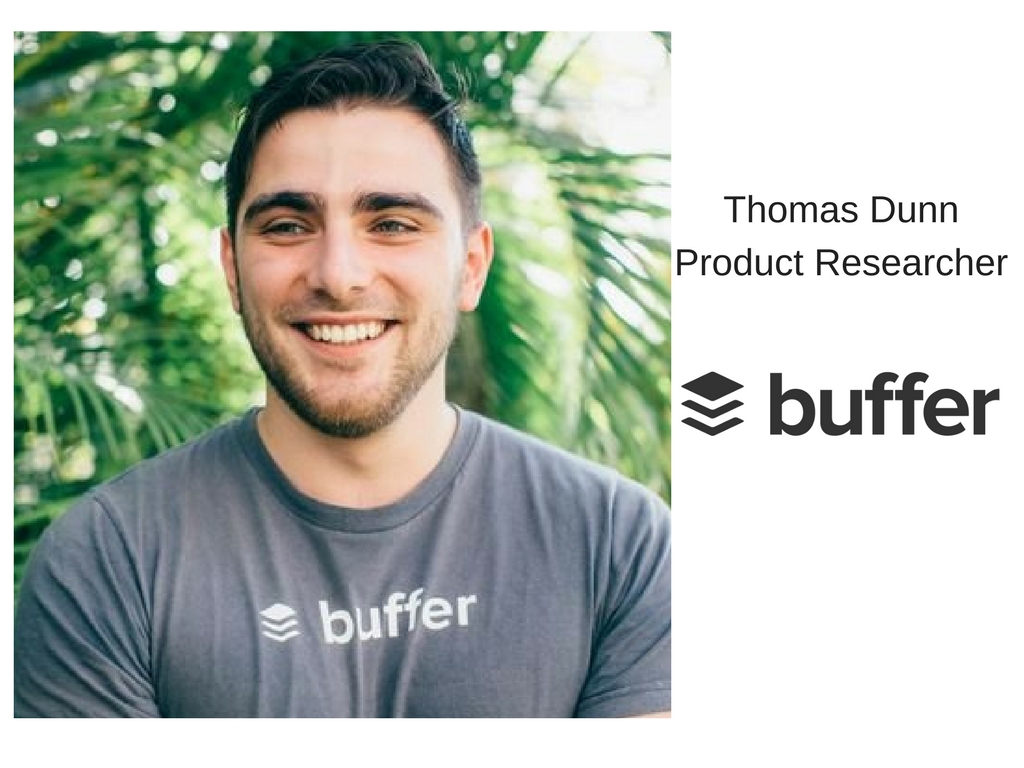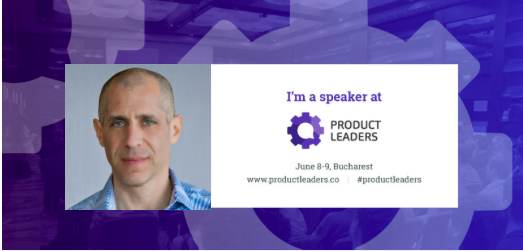
Richard Omollo, UX Designer Booking.com and speaker at Product Leaders 2017, just got interviewed by our colleague, Monica Obogeanu, product manager at Mozaic Labs.
Read on to discover his professional experience, lessons learned and challenges along the way. This is the first part of the interview. The second part of the interview is here.
Monica Obogeanu: Snooping through your LinkedIn profile, I noticed you have a wide & varied experience. Please tell us a bit about yourself, your favorite professional experiences and how they impacted where you are today.
Richard Omollo: Well, my name is Richard Omollo. I am currently a UX designer in one of the localization teams at Booking.com and a member of the Google Sub-Saharan Africa UX masterclass community. Originally from Kenya, I currently live and work in Amsterdam, Netherlands.
I fell in love with computers from the first time I saw one, and so, I got excited trying new things here and there in regards to them. I remember when I used to consult for small businesses in Nairobi, most of them had great ideas on products they wanted to build but when they did, they ended up without actual users.
I took some time off and analyzed most of these businesses and their product cases. They had one thing in common – all of them had business goals, but their products were not designed to solve any customer problem. I approached one of the businesses and asked them if we could try something new–if we could talk to their target customers and identify problems and pain points they had, and then solve for that. We saw huge success in that, and since then, I have always been keen on understanding business goals and user problems by combining data with empathy when I design.
The major impact from all of these experiences is that I learned to appreciate the responsibilities, the challenges, and the craft in each of these three roles – design, engineering, and product management. This has affected how I interact and work with colleagues in these roles to date.
Monica: How did you make the transition from coding towards the UX design field? Looking back, can you share some learning resources that you think would be most helpful for someone taking a similar route?
Richard: I spent a significant amount of time freelancing and that forced me to go the “full stack” way, having to design and build websites single-handedly. I had to invest a lot of time learning coding and design. I realized something while doing this – that there was more to design than I first thought, and that I fell in love with talking to people, solving problems, conducting user research and prototyping. I decided to focus more on the design perspective of development, constantly improving products based on learnings, data and user feedback.
There are a lot of resources out there that would help someone who wants to take a similar route. But one piece of advice I would give them is to maintain their HTML, CSS and Javascript skills – I found these really useful when it came to creating prototypes I use to communicate design principles to various stakeholders.
I would also recommend taking a look at lynda.com, which has a lot of design courses. I really enjoyed one course in particular: Introduction to user experience design, taught by Dr. Rosa Arriaga, a senior research scientist at the school of interactive computing. This course is available on Coursera.
Monica: How is the team you work in structured?
Richard: A team is usually composed of around six people working together on a specific problem or part of the product. Team members usually come from a diverse set of backgrounds with a strong mix of skills: designers, developers, usually one product owner, and sometimes a copywriter or a data scientist.
Our teams are built around specific parts of our product, so we don’t change them too often, but people move teams on average once per year. I have been in my current team for one year now. I have switched teams twice prior to my current team.
Monica: Could you share with us the main steps in your process – from the moment you come up with the idea, to the moment it becomes a feature in production?
Richard: We’ve adopted the Agile methodology at Booking.com. The two most common agile methodologies here are Kanban and Scrum, depending on which is best suited for the team. I have been on teams that practiced both Kanban and Scrum, but my current team uses Scrum.
We are a cross-functional team and we work in iterations, with a product owner and empowered team members that can function as scrum masters at any given sprint or time. This methodology requires us to schedule regular meetings for idea generation, idea validation, iteration planning, daily status updates and sprint reviews.
My UX process is basically divided into four steps: going wide, going narrow, testing, and iterating. This all takes places in three phases, wherein:
Phase 1: I go “wide,” gathering requirements, evaluating competitor’s, idea validation and sizing opportunity.
Phase 2: I go “narrow,” focusing more on the user and business needs. Here is where I design, test, analyse and refine the ideas I want to implement.
Phase 3: This final phase entails launching the product or feature, collecting metrics, evaluating those metrics and making decisions on how best to move forward. Based on the learnings from the data I gather, I go back to phase two in order to iterate further and refine our customer solutions.
It’s not always easy to fit the general UX process and my personal process into a 2-week sprint, so I try to be ahead of the team while being aware of the current sprint, collaborating and effectively communicating. Most important, I make sure user research is an ongoing process, which gives time for investigating the future product direction.
Stay tuned for the second part of the interview with Richard Omolo.
Eager to find out more about how to build useful products, users love? Register for Product Leaders, 8-9 June, Bucharest.





